《Journal of Central South University》 (formerly named Journal of Central South University of Technology, ) is a comprehensive academic English journal, administrated by the Ministry of Education of China, sponsored by Central South University, and jointly published by Central South University and Springer. It was founded in November 1994, published semi-yearly in 1995-1999, quarterly in 2000-2004, bimonthly in 2005-2011, and will be published monthly from 2012.
《Journal of Central South University》is mainly devoted to publishing academic papers and reports that are of creativeness and present the latest achievement of scientific research in such fields as geology, mining, metallurgy, materials, chemistry and chemical engineering, mechatronics, information, construction, traffic, transportation and environment. The columns of the Journal include: Materials Science and Engineering, Metallurgy, Chemistry and Chemical Engineering; Mechanical Engineering, Control Science and Information Engineering; Energy and Power Engineering, Environmental Engineering and Mine Engineering; Engineering; Geological Engineering, Civil Engineering, Traffic and Transportation Engineering.
《Journal of Central South University》is covered by several famous information retrieval systems and databases, including SCI Expanded, EI Compendex, Chemical Abstracts, Metal Abstracts, Aluminium Industry Abstracts, INSPEC, CSAC, CNKI and WANGFANG DATA. The Journal was consecutively awarded “The High-quality Scientific Journal in Chinese Universities” by the Ministry of Education of China in 2006, 2008 and 2010. Now, the Journal is in its quickly-developing period both in quality and quantity, and has become one of the most influential English journals in China.
《Journal of Central South University》的获奖情况:2006、2008、2010“中国高校精品科技期刊”;2009“全国高校科技期刊优秀编辑质量奖”;2012中国最具国际影响力学术期刊;2012年入选教育部“精品科技期刊”工程。
地采选冶、材料科学术工程、机电与信息工程
1.Manuscript preparation Manuscript should be in English and typed on only one side of A4 paper with double space. In addition, a manuscript disk (based on Word) that contains the material to be considered for publication and a copy of the full-length paper is sent to: Editorial Office of Journal of Central South University, Changsha, Hunan, 410083, China. The electronic manuscript can also be sent to the editorial board by E-mail: jcsu@csu.edu.cn.Title and By-line The title should be descriptive, not full sentences. Name, affiliation (institution) of the authors, city, country, E-mail address and telephone number of the author(s) should be listed.
2.Abstract and Key words The abstract of about 100-150 words must accompany each article on page one. It should be self-contained and should be adequate as a summary of the article, namely, it should contain aim and significance, experimental methods and main results and conclusions as well; newly developed conceptions, methods, apparatus, techniques, and newly discovered facts. Summarized results should be exact, direct, and specific.Together with the title, it must be adequate as an index to all the subjects treated in the paper, and will be used as a base for indexing. Avoid displayed mathematical expressions. Define all nonstandard symbols and abbreviations. The key words should include 3-8 pieces of words or phrases to serve as guidelines for indexing, which should be typed below the abstract.
3.Text The text should contain an Introduction that puts the paper into perspective for readers, and should also contain Methods, Results, Discussion and Conclusions. The SI system should be used for units of measure throughout the text. Each Equation or Formula in the article should be numbered in the order with Arabic numerals placed on the right-hand margin. Each caption should be written as a single brief paragraph without indentation. Figures and tables should be consecutively numbered with Arabic numerals. Tables should be drawn with three horizontal lines, at the top and bottom of the table and between the column headings and the table body. Good quality figures have the following characteristics. They should be produced with a good quality laser printer and have lines, letters, numbers and symbols of uniform strength and contrast.
4.Figures Figures (except photographs) are often reduced to 7 cm×7 cm. The final thickness of a line in a figure usually lies within the range 0.15-0.20 mm. When preparing the figures, authors should pay attention to the widths of lines and similar details, as some (e.g. dotted or thin lines) may disappear after reduction. Particular attention should be paid to line strengths in graphics prepared in vector formats.
5.Equations Equations should be neatly typed or clearly written in ink, punctured and aligned to bring out their structure, and numbered on the right. Physical quantities should be printed in italics, and vectors in bold-face italics. For mathematical expressions, the solidus (/) should be used instead of built-up fractions in running text and in display wherever clarity would not be jeopardized. Use “exp” for complicated exponentials.
6.Photographs Photographs should have high contrast. They should be glossy, properly focused and exposed. Those who wish to place two or more photographs side by side are reminded that the column width of this journal is approximately 150 mm. Line drawings should be clear and well designed. The lettering and plotted points should be large enough to be legible after reduction. Graphs should have axes with proper labels such as T/K.
7.Mathematical material The text should make clear distinctions between physical variables, mathematical symbols, units of measurement, abbreviations, chemical formulas, etc. Authors should use italic and boldface to identify physical or mathematical variables. Variables are to be set in normal italic, and vectors, tensors, and matrixes in boldface.
8.Acknowledgements Individuals, affiliation, or other to be concerned who were of direct help in the work should be acknowledged by a brief statement.
9.References Only essential references (formally published journals, articles, monographs, dissertations, reports, proceedings, standards, patents, and/or electronic publications) cited in the text can be listed and must be numbered consecutively by Arabic numerals, which should be listed in the same order as cited in the text. There should be at least twenty references. Periodicals should be referred to in the following order: name of author(s), title of paper, name of periodical, year, Vol. (No.): page number. Books should be referred to in the following order: name of author(s), title of book. city: publishing house, year of publication. The reference published in Chinese should be translated into English and noted by “(in Chinese)”. References in the text should be numbered by superscripts(e.g. “LIU et al[1] reported that…”), and listed on a separate sheet in the following styles:
[1] ZHOU Ji-cheng,YANJian-wu,TIANLi.Influence of rapid process on the structure and properties of Ni-Cr thin-films fabricated by ion beam sputtering[J].Journal of Central South University: Science and Technology,2006,37(5):837-840.(in Chinese)
[2] XING Qi-yi, XU Rui-qiu, HOU Zheng. Elementary organic chemistry[M]. Beijing:Higher Education Press,1993. (in Chinese)
[3] Washington R. On-board real-time state and fault identification for rovers[C]//IEEE Intel Conference on Robotics &Automation.San Francisco:IEEE Press, 2000:1175?1181.
[4] LEMIEUX P, THOMAS Y, MONGENON P E, et al. Benefits of die wall lubrication for powder compaction[C]// Advances in Powder Metallurgy & Particulate Materials. Princeton: MPIF, 2003, 3: 16?25.
[5] SU Bin-zhi. Flow and heat transfer of thermal plasma[D]. Beijing: Tsinghua University, 1988. (in Chinese)
[6] Staggers J O. Rare earth metal silicide alloy:US,4018597[P]. 1977.
[7] WEYAND J D, DEYOUNG D H, RAY S P, et al. Inert anodes for aluminum smelting[R]. Washington D C: Aluminum Company of America, 1986.
[8] WANG Min-liang.Advance on standard database of system engineering of Chinese academic journals [EB/OL].[1998-10-04].
2012 2013 2014 2015 2016 2017 2018 2019 2020 2021 2022
本刊文章发表的年份
在2012年的被引次数
被本刊自己引用的次数
被引次数的累积百分比
本刊文章发表的年份
在2013年的被引次数
被本刊自己引用的次数
被引次数的累积百分比
本刊文章发表的年份
在2014年的被引次数
被本刊自己引用的次数
被引次数的累积百分比
本刊文章发表的年份
在2015年的被引次数
被本刊自己引用的次数
被引次数的累积百分比
本刊文章发表的年份
在2016年的被引次数
被本刊自己引用的次数
被引次数的累积百分比
本刊文章发表的年份
在2017年的被引次数
被本刊自己引用的次数
被引次数的累积百分比
本刊文章发表的年份
在2018年的被引次数
被本刊自己引用的次数
被引次数的累积百分比
本刊文章发表的年份
在2019年的被引次数
被本刊自己引用的次数
被引次数的累积百分比
本刊文章发表的年份
在2020年的被引次数
被本刊自己引用的次数
被引次数的累积百分比
本刊文章发表的年份
在2021年的被引次数
被本刊自己引用的次数
被引次数的累积百分比
本刊文章发表的年份
在2022年的被引次数
被本刊自己引用的次数
被引次数的累积百分比
累积被引百分比:是用于评估期刊影响力的学术指标,是指在某一领域或学科中,某篇论文被后续的论文引用的次数占该领域或学科所有论文被引用的总次数的比例。
他刊引用次数:指在某一期刊中发表的论文被其他期刊的论文所引用的次数。该指标能够反映出该期刊的学术影响力和知名度。
本刊引用次数:被称为自引率,是指该期刊全部被引次数中,被该刊本身引用次数所占的比例。他刊引用次数和本刊引用次数一同使用,可以更全面地评估期刊的影响力和学术地位。
期刊被引半衰期:也叫“cited half-life”,是一个衡量期刊影响力的重要指标,这个指标的值越低,说明该期刊的文章越新,反之则说明该期刊的文章比较老旧。
期刊引用半衰期:指某一期刊平均引用多久以前的论文。计算方法是从当年往前累计,当引用的论文篇数达到全部的50%时,该篇论文的出版年到当年的间隔年数即为此期刊的引用半衰期。
影响因子:指该期刊近两年文献的平均被引用率,即该期刊前两年论文在评价当年每篇论文被引用的平均次数。影响因子分为复合影响因子与综合影响因子,两者都和SCI期刊的影响因子统计方法相同。
被引次数:指某篇论文在其他论文中被引用的次数,这是衡量该篇论文影响力的一个重要指标。需要明确的是,被引次数并不完全等同于论文的质量或价值。高被引论文虽然通常代表着高质量的研究成果,但也与研究主题的重要性、论文的创新性、论文的研究方法等内在因素,以及论文的可获得性、期刊的声誉等多种外在因素有关。
发文量:又称载文量,是指一本期刊在一定时间内发表的文章数量。期刊的发文量是一个重要的参考指标。如果一本期刊发文量太小,可能会让人觉得这本期刊受众较小众,或者为了提高影响因子而刻意降低发文量。然而,如果发文量过大,也需要警惕,因为这可能影响到论文的质量。
平均引文率:又称篇均引文量,是指某本期刊中带有引文的论文数量与该期刊发表论文总数的比例。这个指标可以反映出该期刊引用文献的综合能力和引文的覆盖面。
| 一级发文领域名称 | 发文量 | 被引量 |
| 建筑科学 | 922 | 3297 |
| 理学 | 800 | 1653 |
| 一般工业技术 | 709 | 1362 |
| 金属学及工艺 | 656 | 1497 |
| 交通运输工程 | 654 | 2415 |
| 自动化与计算机技术 | 652 | 1687 |
| 矿业工程 | 442 | 1671 |
| 机械工程 | 375 | 1220 |
| 化学工程 | 349 | 738 |
| 环境科学与工程 | 324 | 946 |
| 二级发文领域名称 | 发文量 | 被引量 |
| 交通运输工程 / 道路与铁道工... | 607 | 2289 |
| 一般工业技术 / 材料科学与工... | 602 | 1156 |
| 金属学及工艺 / 金属学 | 450 | 956 |
| 建筑科学 / 土工工程 | 388 | 1509 |
| 自动化与计算机技术 / 控制科... | 371 | 1052 |
| 理学 / 化学 | 295 | 501 |
| 环境科学与工程 / 环境工程 | 295 | 861 |
| 建筑科学 / 岩土工程 | 287 | 1172 |
| 自动化与计算机技术 / 计算机... | 281 | 635 |
| 金属学及工艺 / 金属材料 | 263 | 605 |
当初看到有人非议这本书的印刷质量,犹豫了一下还是买了,到手之后发现,没有评论中说的那么差,纸张很不错,影印的也还可以,完全可以阅读。不知道其他人收到的书质量怎么样,我的总之还是不错的,以后还会继续关注学术之家。
该杂志的文章质量还是挺高的,工作一般比较细致。两个审稿人很认真,提的问题虽然比较多但都比较中肯,编辑处理稿件也很认真负责,速度比较快,而且会有专门的编辑把文章的各种语法词汇等方面的问题进行彻底的修改,让我受益匪浅。
若用户需要出版服务,请联系出版商,地址:Editorial Office of Journal of Central South University Central South University, Changsha 410083, China,邮编:410083。
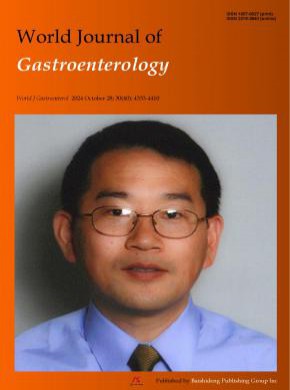
SCI期刊
人气 14832 评论 3
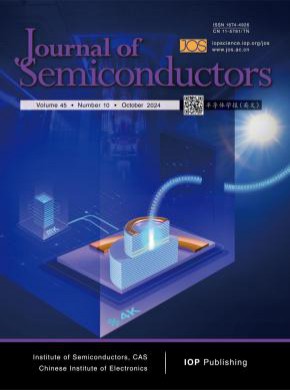
CSCD期刊、统计源期刊
人气 13664 评论 3
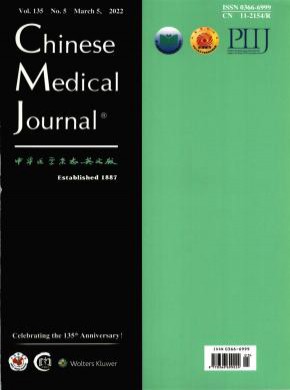
SCI期刊、CSCD期刊、统计源期刊
人气 13584 评论 8
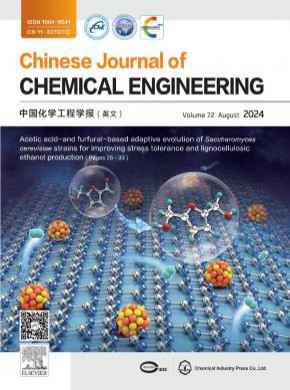
SCI期刊、CSCD期刊、统计源期刊
人气 11930 评论 5
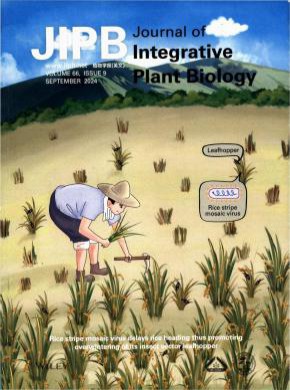
SCI期刊、CSCD期刊、统计源期刊
人气 11726 评论 3
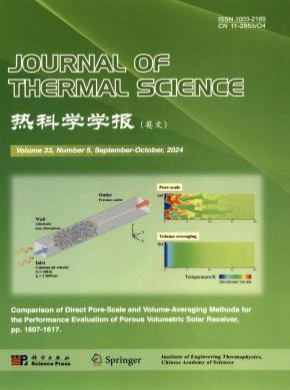
SCI期刊、CSCD期刊
人气 11089 评论 2

SCI期刊、CSCD期刊、统计源期刊
人气 10995 评论 2
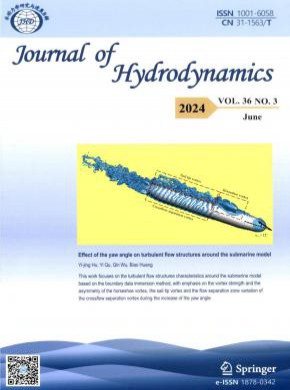
SCI期刊、CSCD期刊
人气 10744 评论 1